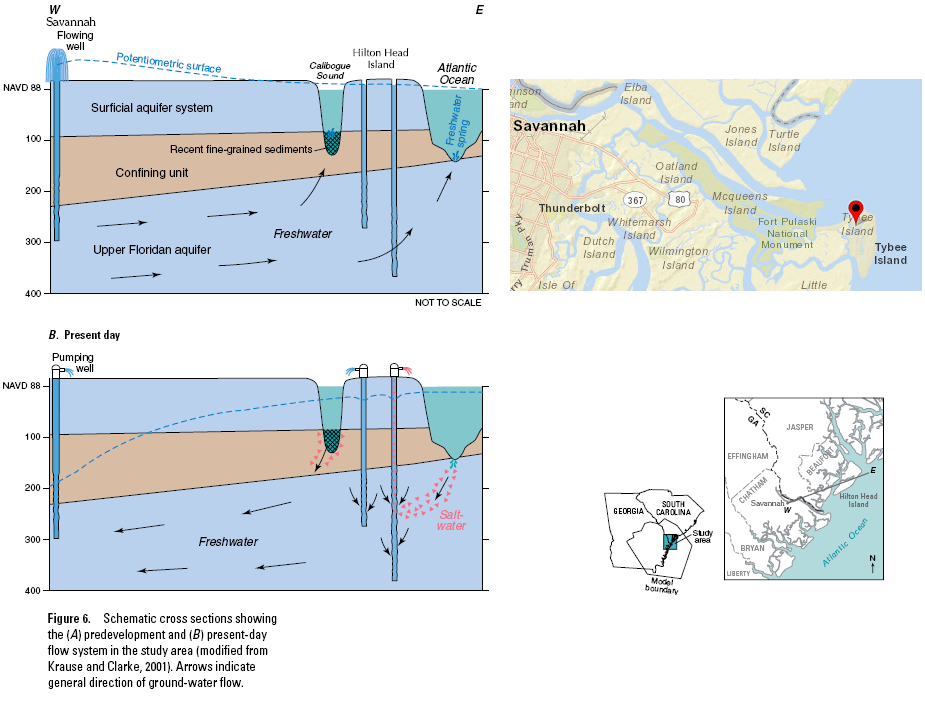South Atlantic Water Science Center
South Atlantic Water Science Center
THIS PROJECT HAS BEEN COMPLETED AND IS BEING ARCHIVED IN ITS FINAL CONFIGURATION

Recent investigations (Ransom and Park, 2011) have indicated that seawater is migrating downward from the ocean floor, through the "Miocene" confining unit, and is nearing the top of the Upper Floridan aquifer, the principal source of fresh drinking water in the Savannah-Tybee Island area. Monitoring ground-water levels and quality is important for protection and effective management of the water resources of coastal Georgia. To monitor changes in chloride concentration and water levels that could indicate saltwater contamination, an existing well-cluster site at Tybee Island was modified to deliver "real time" data via satellite to give early indication of saltwater contamination.
Specific conductance is a surrogate for chloride concentration, and is used to monitor the potential movement of saltwater into the freshwater zones of the Upper Floridan aquifer. To monitor the extent of chloride contamination in the Tybee Island area, a real time monitoring site has been established about 800 feet south of the Savannah River. The site consists of four wells completed in the surficial aquifer system, Upper Floridan confining unit, Upper Floridan aquifer, and Lower Floridan aquifer. The real time network includes:
Reference: Ransom, Camille III, and Park, A. Drennan, 2011, Chloride concentrations in the surficial aquifer beneath saltwater wetlands near Savannah, Georgia, and Hilton Head Island, South Carolina: South Carolina Department of Health and Environmental Control Technical Publication No. 02J20-11, 19 p.